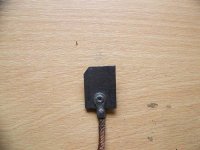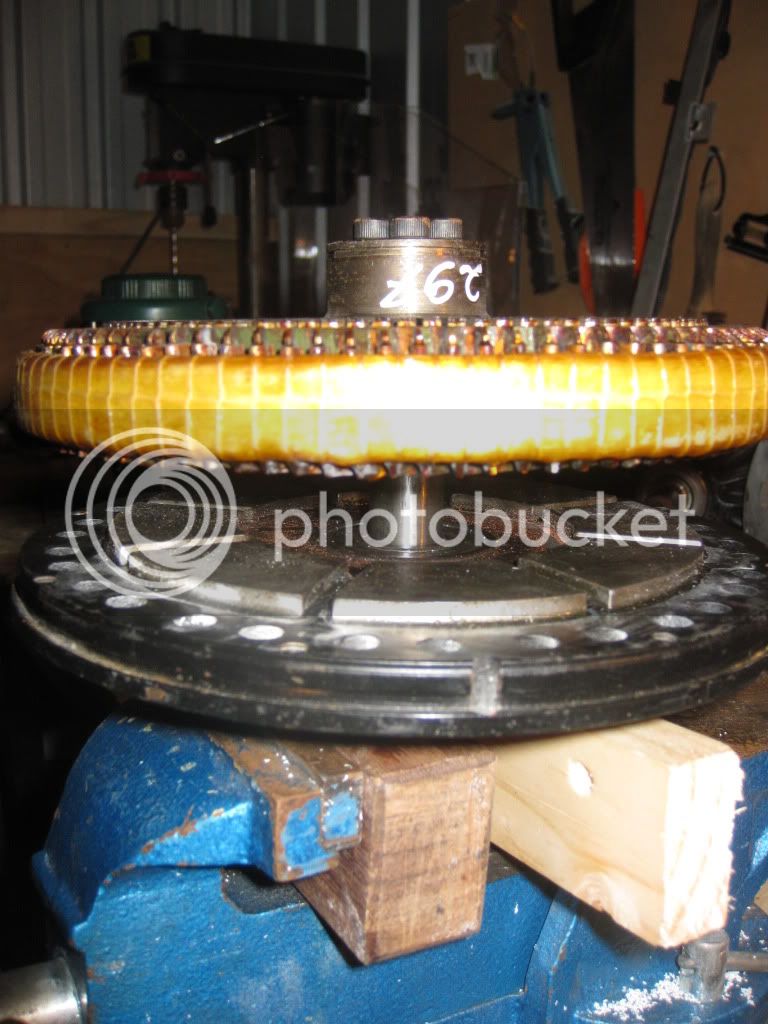I'm realising I should have taken the time to organise notes before trying to write it all out in one go....but I'll stumble on, perhaps someone will tidy up later for me!
So, since something that I started off is actually causing one of the causes of motor abuse, lets talk about paralleling motors. Since we are pushing the motors to 100% electrically and thermally, if there is any inbalance between the resistances of each motor setup it would mean that one motor is then running at greater than 100% of its capability. It won't do that for long..
If you want a pair of PM motors to share load equally, you must;
1. Ensure that all cabling between motors and controllers are of equal length, and all connectors well crimped and bolts fastened.
2. Use motors that spin at the same RPM for every volt applies (I'll call these "Matched Motors"). To verify the RPM/V of the motor, simply connect a low voltage power source (around 10-20v is fine) with the brushholder set in the neutral position, and measure the RPM of the shaft and the voltage present at the motors terminals. Divide the RPM by the voltage read and you have your figure. You should find 71RPM/V, but due to some manufacturing inconsistencies out of Agni's control, there was actually a spread of 62-74RPM/V for one batch last year, which of course is terrible on a parallel motor setup. Match to within 1 RPM/V if possible, 2 RPM/V absolute worst (anymore and I'd not run them together, or limit speed until a better match was found).
3. Take extra care that the brushes are of equal resistance (all positive matched, and all negative matched). To test brush resistance, set up a power supply for around 10A 10V (doesn't have to be precise, as long as you can repeat the test accuratly at the same power). Attach the PSU leads to each end of the brush (croc clips), current will flow. Place multimeter probes at eather end of the brush also (but touching the carbon, not the croc clips) and measure the voltage. You should see something in the region of 20-100 millivolts. Sort them into batches as close as you can manage to matched, and use lowest resistance brushes on the positive terminals, the next lowest batch on the negative terminals. Again, hopefully the variance of brush resistance is a temporary affair (until the brush manufacturers get their act together!!) and the high quality that I remember from yesteryear will return!
4. Match and balance the timing at the correct level of advance so that the motors share load equally. To accomplish this accuratly you need to be able to load your vehicle (ie, with a dyno) and measure current to both motors with the throttle fixed in position at a set power level. It is possible, for instance, to balance at lower current on a motorcycle by simply using a paddock stand and holding the rear wheel at 30mph or so, but since you are working at less than 50A current, any differences will be amplified when you later apply 600A+ to the pair. I'd want to see at least 100A per motor and within 5A of each other before calling a pair balanced. Hitting the rear brake can buy you a few seconds at higher current, but the brake will overheat real fast, and you may need to take your time over the process. Uni-T clamp meters ($30) are fine for the job, does help to have 2 so you can leave them setup and glance from one to the other, but it is possible with one to swap from side to side.
Brush Fettling.
It can help improve commutation (reduce sparking) if the brushes are fettled slightly. Since the centre of the commutator angles slightly inwards, effectivly timing in this small area is different to the timing over the rest of the brush surface. Removing the inner corner of the brush helps aleviate heat buildup in this area.
 View attachment 1
View attachment 1.
Of course, ensure at all times that the brushes can move freely and the spring pressure feels even before assembling.
The brush holders are made of Bakelite, one of the properties of this material is that when it cures it changes size slightly, leading to a small variance of holder size. If you find that a replacement brush holder is a slopooy fit in the motor, wrapping a layer of insulation tape to help keep it centred in the motor can make balancing that much easier..
Motor Speed.
The reinfoced Agni 95R can spin at a maximum speed of 6000 RPM saftely. Exceeding this limit can cause the copper to fly apart, especially if it has also been overheated to the point that the solder holding the connecting strips is loosened at the same time.This usually corresponds to around 80v, though as mentioned above, if your motors RPM/V is different to standard you may need to recalculate.
If a battery voltage of higher than 80v is used, some provision must be made to limit speed/voltage supplied to the motor. Kelly controllers for instance can limit top motor speed/voltage with a setting in the software, a stand alone system to cut throttle if the speed/voltage limit isn't too hard to work out. (Here are some words of wisdom from Cedric on the matter, copied from a recent reply to a customer.." You could arrange an absolute limit by connecting a 500ohm resistor in the wire between the throttle potentiometer wiper or Hall-effect output and the controller throttle input and connecting the output terminals of an opto-isolator between throttle input and ground on the controller; now if you connect the input of the opto-isolator to the controller output or one of the motors via a Zener diode of about 80V and a resistor of a few hundred ohms, when the motor voltage reaches about 85V the opto-isolator will start to conduct and will override the throttle to limit speed.")
As far as motor current goes, the motor can take instantaneous loads of 500A, a few seconds at 400A, and 230A continuous (more with adequate ventilation). Bear in mind however, that if you trying to run a race, and hit the motors with 500A several times in a lap, you may well push past the thermal limitations of brushes and motor faster than you'd expect. For this reason, I would reccomend a controller with 400A peak output, especially if using a controller that can actually supply it's peak rated current for more than a few seconds (ie, the older Kelly casings, KDHA/B, supply full current perhaps once in a race, the newer KDHE type housings can supplypeak power every time you open the throttle fully when properly cooled). A KDHE 800A would be a good racing controller for a pair of motors (Although I am known to use 1200A controllers, they are limited for the track to 65% power. For a drag race you might get away with a stting of 80% without damaging motors, 100% with a fair chance of cooking a few brushes, but if you do this on a proper track race the bike will not finish the distance!!)
High Current at High Speed.
Now, although an Agni can take high currents for short periods at reasonable RPM's, things change at higher speeds. you might think of it as the motor having a power/KW limit as well as individual voltage and current limits. Basically, short bursts of even 500A and above will not result in brushes arcing at less than 4Krpm, but as speed increases arcing becomes more and more of a problem, and at above 5Krpm even 330A can cause quite a firework display. It is possible with the newer KDHE Kelly's to set a battery current limit as well as motor current, which seems to work fairly well, and has the effect of cutting back current only at higher RPM.
Most of you already know about how controllers effectivly multiply current at lower speeds on an Ebike controller, well, most larger controllers actually limit motor current rather than battery current, so the effects are slightly different thought he principle is the same. Basically, at low speed when you fully open throttle the motor will be supplied with the full set current, and this will continue until motor voltage comes close to battery voltage at which point current can no longer flow freely and starts to drop.
With the new controller modifications (thanks Fany), it is possble to set motor current at say 100% (assuming perhaps a 500A controller on a 84v pack), and set battery current to 300A, then you have effectivly given a power (KW) limit that will stop high current being applied once speed increases to a certain point.
Of course, it would be possible to come up with other means of controlling high speed power, simplest being to reduce throttle when going fast

More soon,
Steve







